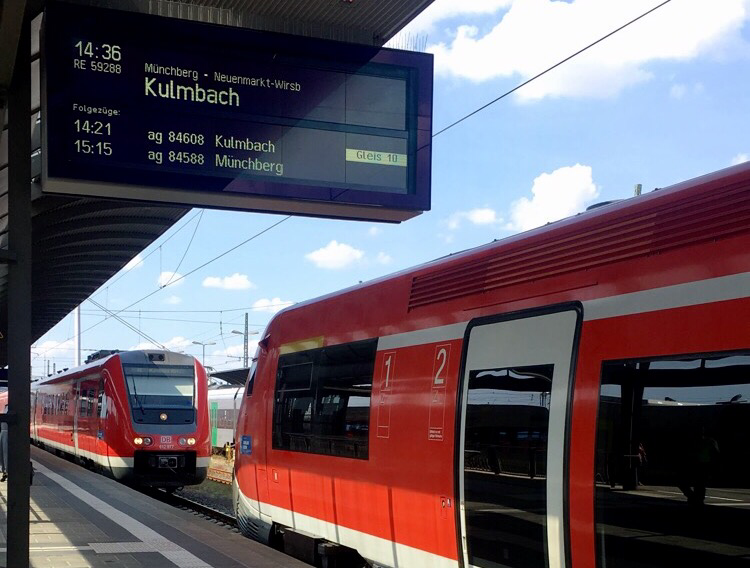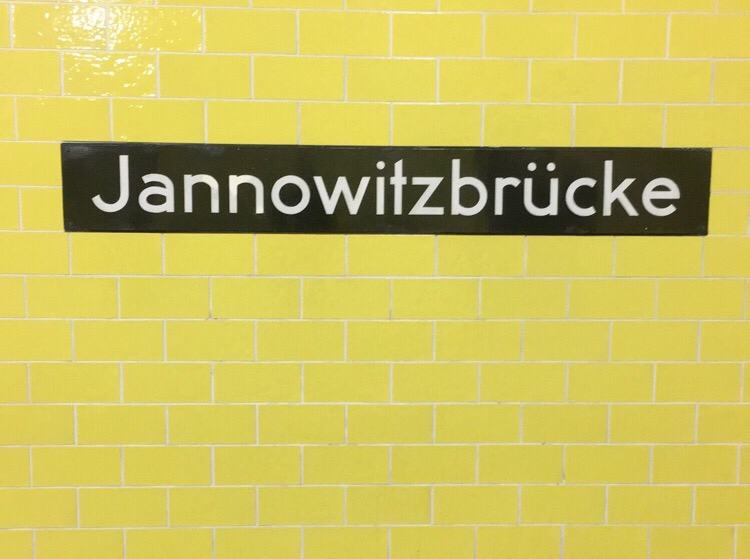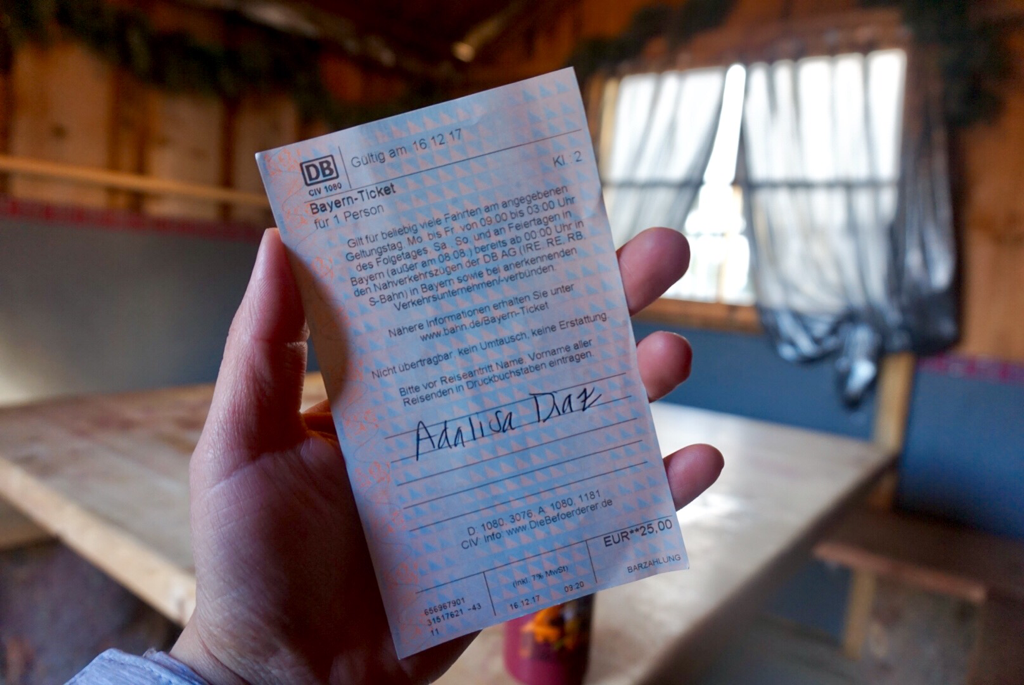|
You don't have to be a "city" person to understand how to take the train around Germany. Actually, I would say anywhere in Germany would be the best place to learn how to utilize public transportation because the Deutsche Bahn (DB) is efficient, reliable, and punctual. Some countries don't have it nearly as good as the Germans have it when it comes to public transportation. Although I have lived in cities most of my life, it wasn't until I moved to Germany that I learned how to take the train, the bus, and other means of public transportation. I'm here to explain and to guide you through your next planned trip by train in Germany. The BasicsIn Germany, you have access to several different types of trains such as regional trains (RE, RB, IRE), city rapid trains (S-Bahn), or an intercity express train (ICE, IC/EC) which are mostly considered as the high speed trains (the ICE train can travel up to 330 km/h). You'll also have access to the underground rail or subway which is called the U-bahn, and many busses and trams within cities. Each train journey will be categorized by the train type and the number associated with that journey. For example, say you want to take the train from Nuremberg main station to Munich main station. Depending on whether you're in the train station or viewing the departure schedule online, you will see the Fahrplan with a few details such as the train type and number associated with that train type (i.e. ICE 1085), the time it departs, the destination (in this case Munich), the stops in between such as Ingolstadt or Augsburg (usually there are several towns or cities that the train will stop at for a few minutes before continuing on to the destination), and the platform that the train will be at for you to board. Thanks to the internet and Google, you can now easily input the location of where you are with the destination you want to be at and voilà! Google will inform you on where you will need to go and what stop to get off on to reach your destination. If it's still too confusing to understand, you can always go into your nearest train station (bahnhof) and ask the customer service representatives for more information on your journey- they'll be glad to help! Familiarize YourselfIf you've never maneuvered through any kind of train system before, figuring out how to use it can be overwhelming at first. Not only can it be frustrating to learn the process of how to plan and ride the train but it can be even more frustrating in another country if you don't know the language very well. Here are some key words to look out/listen for while you are planning your next trip or are actually in the train station:
Pro's and Con'sTraveling by train is my favorite method of traveling within Germany but there are always good and bad sides to any method you take. Here are the pros:
Planning AheadWhether you are visiting or if you are an expat and live in a rural part of Germany, planning trips by train is a must! If you are traveling or live in a city, traveling spontaneously is easier to accomplish. Unfortunately, where I live, there are not many train or bus stops nearby and they don't run frequently either. If I miss the train or bus, I would have to rearrange my whole schedule which would frustrate me a bit. I would need to have a backup plan if I needed to be somewhere at a certain time and happened to miss the train. If you are traveling in the city, my best recommendation is to download a map of the public transportation in said city to familiarize yourself with the stops you'll need to take. Sometimes, I will screenshot the map or write in the notes section of my phone the destinations with the nearest train stop or metro nearby. That way I can easily plan where I will be during my travels. You should also make note of the zones when traveling in cities such as Berlin. Have a look at the locations you'll want to stop at to see which zones you will be traveling in. When you purchase your ticket, it will ask you what zones will you be traveling in. If you take a train outside of that zone, it is as if you did not purchase a ticket and could be fined. Also, if you can, download the Deutsche Bahn (DB) application on your phone so that you are up to date on any changes to the train journey and also you can plan your routes there, as well as Google. If for whatever reason the train you will need to take is delayed, it will tell you what time it is expected to depart and arrive to your destination. Lastly, be mindful of the times the trains, metros, trams, and busses run daily. I've made the mistake before of missing the last train of the evening and I waited until the morning to take the next train back home. Regional Day TicketI am not well versed in all of the different types of offers and savings but one type of savings that I use the most is the regional day ticket. Specifically, I use the Bayern ticket because I live in Bavaria but there are 13 other regional day tickets you can purchase either online or at the train station nearest to you. Here's how it works: If you wish to purchase the regional day ticket, first learn which trains you can use on this ticket and when you can use it. An example is the Bayern ticket- this day ticket can be used on unlimited journeys within the federal state of Bavaria and some neighboring cities such as Ulm, Salzburg, and Reutte. The ticket can be used on weekdays from 9am to 3am the next day and on the weekend you're allowed to use it all day until 3am the next day. The starting price is at 25 Euro for one person to travel unlimited throughout the day in Bavaria. Each additional person is an extra 6 Euro so for example if you're traveling as a couple, the Bayern ticket would cost in total 31 Euro. Up to 5 people are allowed on one ticket. Each state has different prices and terms of use. For the ticket to be valid, you must write the first and last names of the travelers on the ticket. Doesn't this sound perfect and too good to be true? Well, the trick is that you can utilize any method of public transportation BUT the high speed trains such as the ICE/IC and EC trains. You can take the S-bahn, RE/RB trains and other regional trains associated with Deutsche Bahn (ALX, BOB, M, etc), the U-bahn, trams and busses as well. So it nearly is perfect if you're not in too much of a hurry and want to make multiple stops within Bavaria. Purchasing Tickets in Person and OnlinePurchasing tickets online is simple from Bahn.com or from the mobile app DB Navigator. I always have my tickets printed because I'm afraid my phone may die or freeze or it just won't work so I continue to print all of my tickets. If you are not going to use any regional tickets for your next journey, I would suggest going to your nearest bahnhof and speak to customer service representative about where you want to travel to next. Usually, they will find you the cheapest deals, and sometimes they have promotions that you may not have known about if you didn't walk into the train station. They will search the journey for you, you can pay on the spot (even with card), and they will print your tickets and explain to you where you'll need to go next. I've always had great service from the train stations I have purchased tickets from. If you don't speak German, it's ok! Politely ask them if they speak English and I'm sure they will be able to help. If you are eligible to purchase tax free forms such as a VAT form (value added tax form), then you can bring a form with you to the train station and purchase tickets while saving 19% of tax on any journey that is within Germany. If you purchase tickets anywhere outside of Germany, they will discount the price of the train tickets that are within Germany so you will still end up saving, especially if you are traveling with multiple people. All Aboard!Finally, you have boarded the train and are ready to reach your destination. On the train, you will see seats facing in both directions since the train can go either forward or backward. I tend to dislike sitting in the opposite direction in which the train is going. I will usually try to spot where the conductor is sitting and find a seat sitting in that direction. If you are on an ICE or IC train, you may want to pay attention to where you will sit. If you have purchased a ticket with a specific seat or in First class, then you will sit in that designated seat or area. The ticket will tell you what class you are sitting in, the cart number, and the seat number if you purchased the seat. If you did not purchase a seat with the ticket, only sit in the available seats. Usually, you will see a small digital screen that might display "Reserviert" so you don't want to sit there or else someone will speak to you in German and tell you that you're sitting in their seat. If you purchased a ticket for a regional train, there usually are no reserved seats but there are some areas where people with bikes and strollers will sit at, or pregnant and elderly people will sit at so just be mindful of that. Deutsche Bahn is currently working on getting reserved seats on regional trains. Once you have settled into your seat, you will likely see a screen above the aisle in the front of the cart that indicates the time or the next stop. You will also hear an announcement of each stop and what direction the doors will open. If you hear the word "Links" that means you will exit the train on the left side of the direction the train is traveling. For some of the smaller trains, the train may not stop at every stop so you'll have to press a button (usually it says "Halt") to indicate that you want to get off on that next stop. If you don't press the button, the conductor will not know that someone is wanting to get off on that stop and the train will continue on. There will also be a restroom in some carts on the train. Usually there is a light displayed to let you know that the restroom is being occupied, similar to airplanes and their restroom sign. On the high speed trains, you may see someone with a cart offering coffee and small snacks for sale. Also, there are usually electrical outlets in case you want to charge your phone or other devices. This is not common on subway/metro stops but usually the regional and most definitely the high speed and long distance trains, there will be someone going up and down the aisle of the train asking to see passengers tickets. I have been on some S-bahn trains that have not asked me for my ticket but for the most part they do check tickets. Be sure to have it available when you see the DB employee walking around. Now, you may enjoy the rest of your journey! VIT - Very Important TipsBe sure to purchase your ticket beforehand. If you are pressed for time, you can locate the conductor prior to boarding and ask them if you can purchase the ticket on the train. I have done this once and although they weren't too happy about my lack of planning, they spotted me on the train and allowed me to purchase the ticket after the train departed at no extra charge. If you ride the train without a ticket (Schwarzfahren), you are subjected to fines that can be greater than the original priced ticket itself. Validate your ticket prior to entering the train. You can still be charged a fine if you don't validate your ticket. You can find the validator prior to boarding where it will stamp the ticket with the time you validated it. Take note of cart of train you are about to approach. On some routes, the train may split and break off to another destination so just be sure that you are on the right cart otherwise you will end up somewhere you don't want to be. While you are standing on the platform, you will notice signs that states A, B, C, and D. If the cart splits, the informational display will note which part of the platform you'll need to stand on to enter the train. If you are unsure, just ask the conductor if the cart you are about to step into will take you to your destination. Some areas of the train may have a quiet area (Ruhebereich) where you shouldn't speak too loudly. Not everyone abides by this but you don't want to be the only loud person who is told to "hush" by an angry German. To them, it's rude and impolite (which I agree, but I also understand that as an American, we are automatically considered loud to others). I don't think anything legally can happen but as I mentioned, you should be considerate of their social norms. If you plan to drive to the train station, be sure to have some change for the parking. Most of the smaller train stops have a Park and Ride (P + R) which are free to park at if you have purchased a valid train/subway ticket. If you are not familiar with that train stop, you should have cash available to pay for parking in case you need to pay first. Arrive to the train station early! I once was going to take the train to Nürnberg and arrived 10 minutes prior to the train leaving so I thought I had enough time. There was only one ticket machine and there was a long line for it. The people who were in the line were American and didn't seem to understand how the ticket machine worked. Someone explained to them how to purchase tickets but it took quite a while to do that. They finally purchased their tickets and at that point, the train had already arrived. I quickly purchased my ticket and as I was grabbing my change, the train had left! I had to wait another hour to get on the next train to Nürnberg. A lesson well learned for sure! I hope this was both informative and helpful for your next journey by train in Germany!
1 Comment
Paola
10/8/2018 03:27:14 pm
Love reading this and it reminded me of our train trips! ❤️
Reply
Your comment will be posted after it is approved.
Leave a Reply. |
Photos used under Creative Commons from cody_der_fotomeister, alex_tiger87, mypubliclands, crosathorian, Quad Dimensional Pictures, Piero Annoni - Fotografo, Michael Panse, jyl4032, fcam, rileyroxx, We have moved! Please visit /highwaysengland, eggerbraeu, Tony Webster, Allie_Caulfield, -JvL-, Allie_Caulfield, andreasgaenger, Allie_Caulfield, Jeff Bernhard, andreasgaenger, BLMOregon, andreasgaenger, Lorenzo Blangiardi, andreasgaenger, Jack_IOM, David Holt London, danichro, donchili, CucombreLibre, Rodrigo Soldon 2, BLMOregon, frans16611





